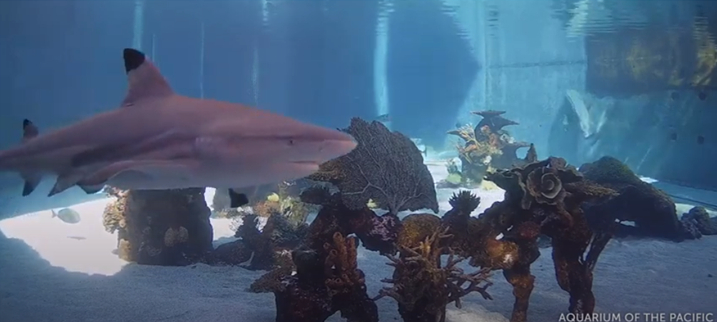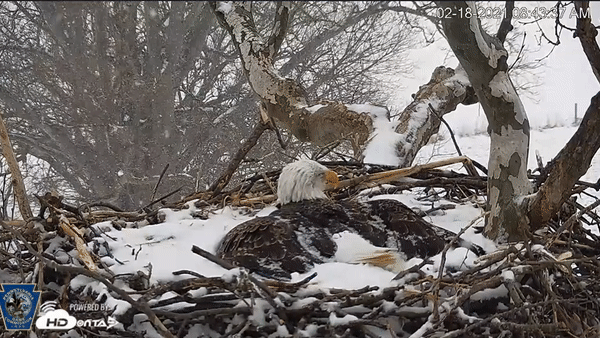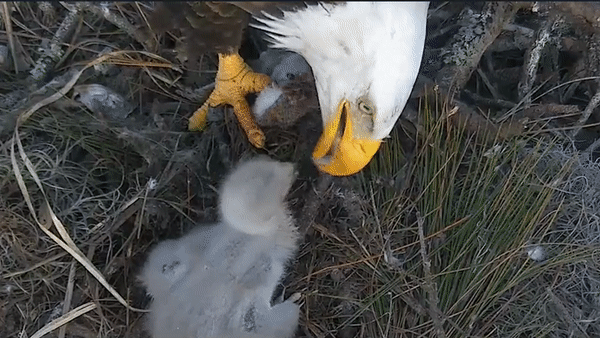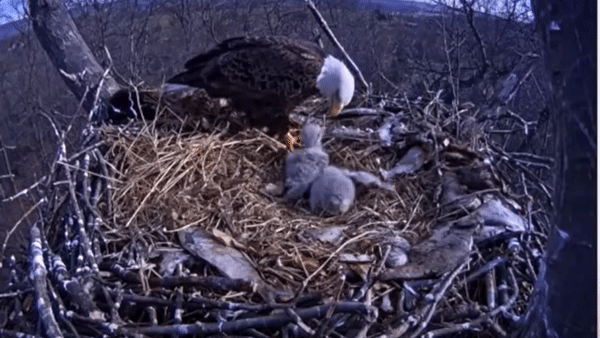
By Jared Hottenstein
Of all the branches of science we teach, life science presents the greatest hands-on challenges. You can always pick up a classroom set of Educational Innovations’ Owl Pellets, but bringing live animals into the classroom is a tricky proposition. Online learning is the perfect opportunity for students to explore the world of life science—especially through a streaming webcam! Think of it as your students getting the chance to watch “life science celebrities.” Students can tune in once a day—or once a week—to see what new snack mama eagle brought back to the nest.
The power of a webcam isn’t just in the watching, but also in the wondering. Myriad questions are sure to arise about what they see. This can easily lead to excellent research opportunities. So how do you get started?
Getting Started
HDOnTap, the San Diego Zoo and Explore.org live cams are three top resources for free live streaming animal cams, offering hundreds of different webcam options. You’ll be surprised by all the amazing live streaming animal cams you can find online. Your students can watch everything from a hummingbird feeder to a shark lagoon in locations across the country. With nearly limitless options, how do you work an animal webcam into your classroom schedule?

Webcams are a great way to start and end your school day. It gives students something relaxing to do while they’re settling in or winding down from their school day. If daily webcam time isn’t an option, maybe you can start Webcam Wednesdays and give students a few minutes to check in on the webcams. Fun Fact Fridays will also work if you have students watch a webcam and see what kind of fun facts they can dig up online about the different animals you may feature.
Animal Webcam Options
Some animal cams may sound cool but have the potential of being pretty boring. A bear den webcam sounds awesome but watching a blob of fur just lay there isn’t a big attention grabber. Eagle cams are a good option from February to June because that’s when eaglets are hatching and growing. New food items appear in the nest each day. I’ve seen squirrels, skunks, turtles, and fish in an eagle’s nest. I’ve also seen an eagle spread its wings and slowly get covered in snow up to its neck as it protected its eaglets.

In general, wild animal webcams can be unreliable when it comes to consistently seeing animals on camera. Zoo webcams allow for a more reliable experience when it comes to watching and observing animals. The San Diego Zoo offers some of the best webcam experiences online. Where else can your students check in on a tower of giraffes or a bloat of hippos? Be prepared to do a little bit of research to discover when the animals are most active on the zoo webcams. The live cams on Explore.org offer the most variety. Your students can check in on a puppy playroom, a kitten cabana, or peek at an African watering hole or an alligator swamp.
Make a List and Check It Twice
Make sure to check the cams before sending kids to the livestream. Having a list of several options is helpful. Sometimes animals don’t cooperate. If animals aren’t on camera in one location, students can switch to an alternate webcam.
You’ll also need to remember that the circle of life is a real thing. Students are going to see animals eating and pooping. Not every student is going to enjoy watching an eagle tear apart a squirrel to give her eaglets a snack. One year, as my students and I checked in on an eagle webcam, we witnessed a maverick eagle raid an established eagle nest, chase off the parents and leave the unhatched eggs abandoned. It was sad to watch, but it certainly was a powerful teaching moment. Lots of learning can happen when students move beyond watching the webcams and do some research.

Webcam Lesson Options
Webcams open a world of research. What do the animals eat? How many young do they have? What type of habitat do they prefer? When are they most active? My students and I were watching an eagle cam when we witnessed an eaglet poop in an interesting way. He fired it out of the nest like a rocket. We did some research and found that eaglets projectile poop to keep the nest clean.

The information that students find can be presented in a PowerPoint or research report. The screen recording feature in PowerPoint allows students to record snippets from webcams to include in their report.
If you want to kick things up a notch, you can use the green screen feature in many video editing apps to overlay your students talking about the animal they researched directly over a screen recording of the webcam to make it look like they’re standing next to the animal similar to an Animal Planet video.
Next Level Learning
Technology allows you to take things to the next level if you’re looking for even more enrichment. Have students Facetime or email with experts from the zoo so they can ask questions and share any research projects they completed. Many zoos are on Twitter and Facebook. Share your research and start a conversation with them on social media. You’d be surprised what kind of animal webcams are online. Challenge your students to see what kind of wild animal webcam celebrities they can find online!


